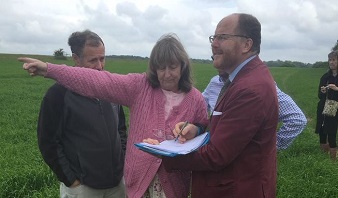As the Southern North Sea becomes the world’s largest centre for offshore wind infrastructure, East Anglia is in danger of being ruined by the dozens of Wembley-sized substations and thousands of miles of underground cabling required to connect these new wind farms to our National Grid.
That’s why I, along with a core group of Norfolk and Suffolk MPs, campaigners and industry experts, have been lobbying Government hard over the past year or so – calling for, and then securing from the Energy Minister, a Review into how we connect offshore wind infrastructure to the National Grid onshore.
Today, National Grid ESO have outlined the initial findings of that Review – highlighting that offshore wind farms should be integrated, rather than a new connection being created onshore for each one (exactly what those of us campaigning on this issue have been calling for).
Their report also suggests UK consumers would save 18% or roughly £6 billion too if this integrated approach is adopted – with the East of England benefitting more than any other region: with savings of 30% = £2.3 billion.
This is hugely promising.
It is clear that, if we are to meet (and exceed) the Government’s ‘Green’ commitments, prevent the unnecessary damage to our rural and coastal landscapes and the economic and social disruption that comes from the current ramshackle approach to delivering this infrastructure, we need a proper Strategic Plan – and our campaign believes that an integrated offshore approach is the best way forward.
Tomorrow, as part of our efforts to hold this Review to account and bring about the change required for such an approach to be implemented, I will be joining our core group of Norfolk and Suffolk MPs in a meeting with National Grid ESO officials to go through the findings in their report in even greater detail.
Rest assured, I remain firmly committed to pursuing this in the weeks and months ahead – and look forward to providing another update soon.
To see today’s EDP article, please click here

